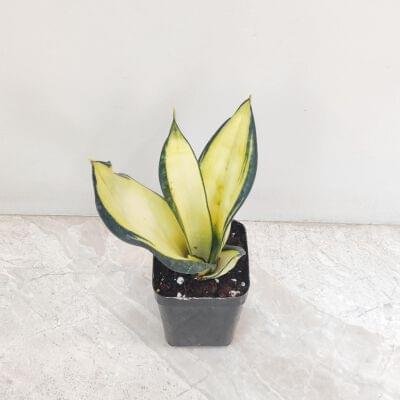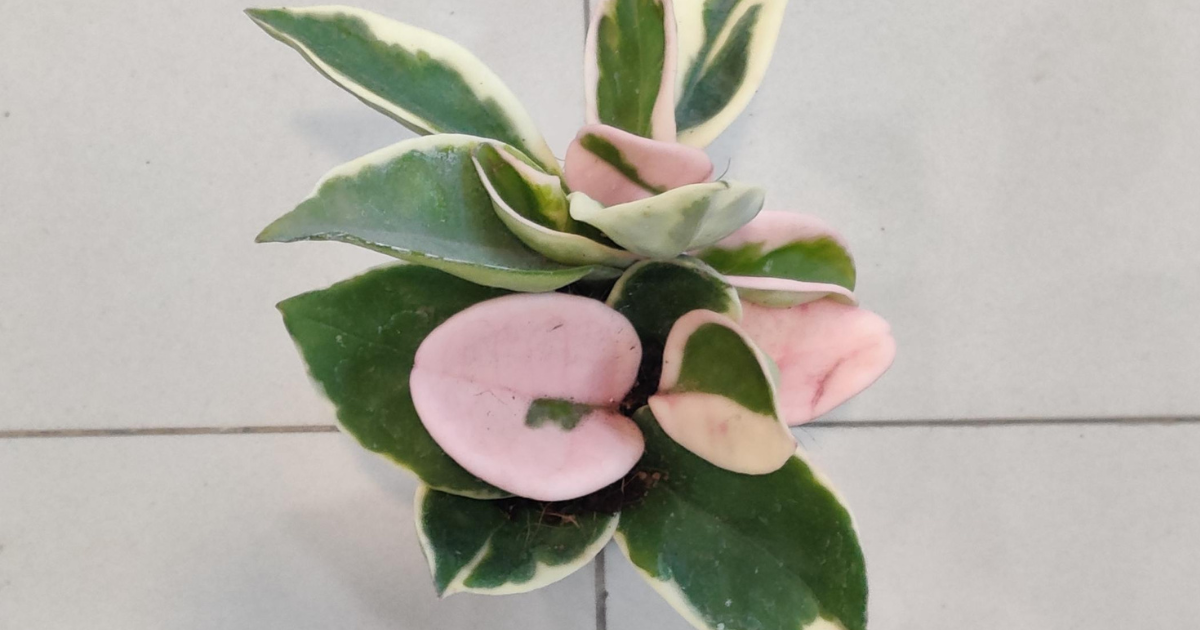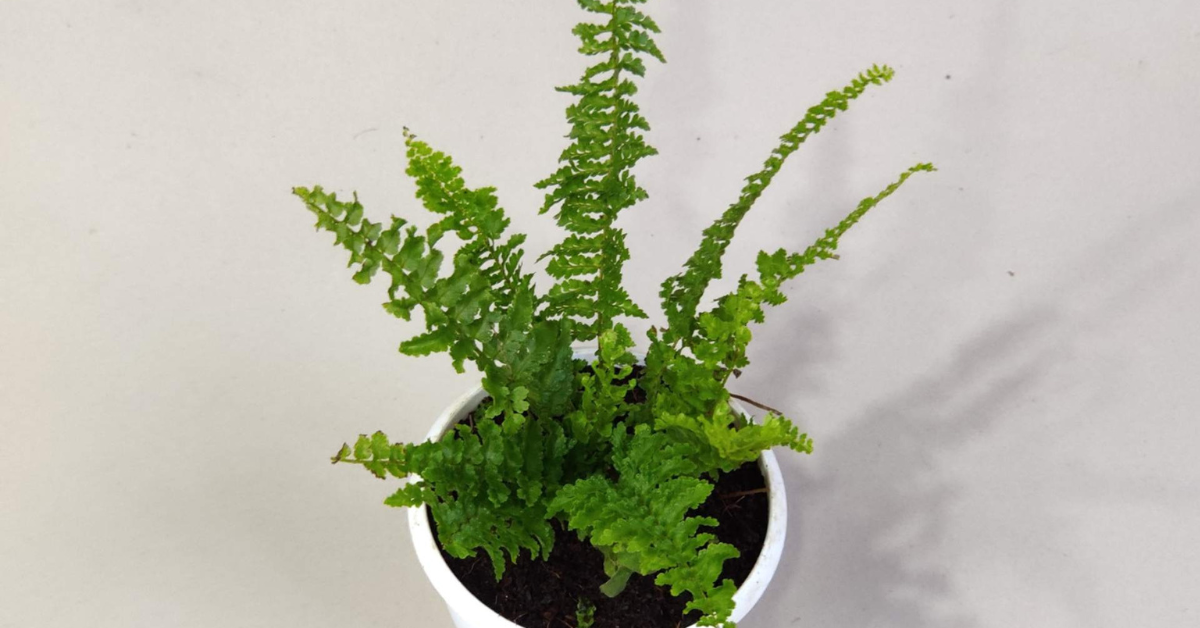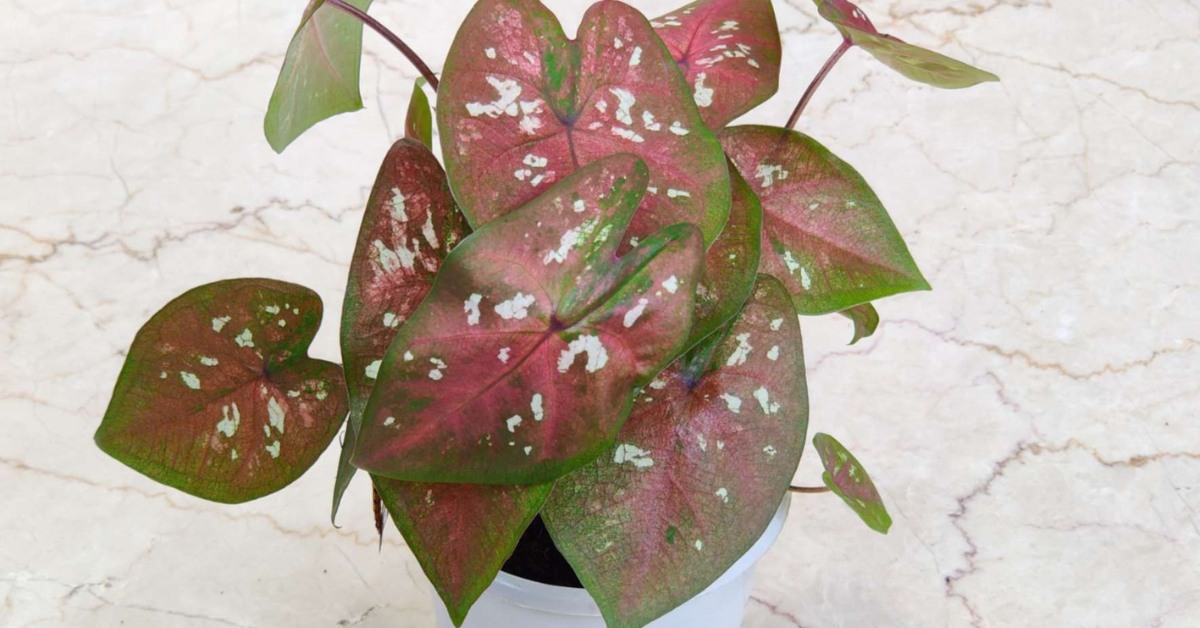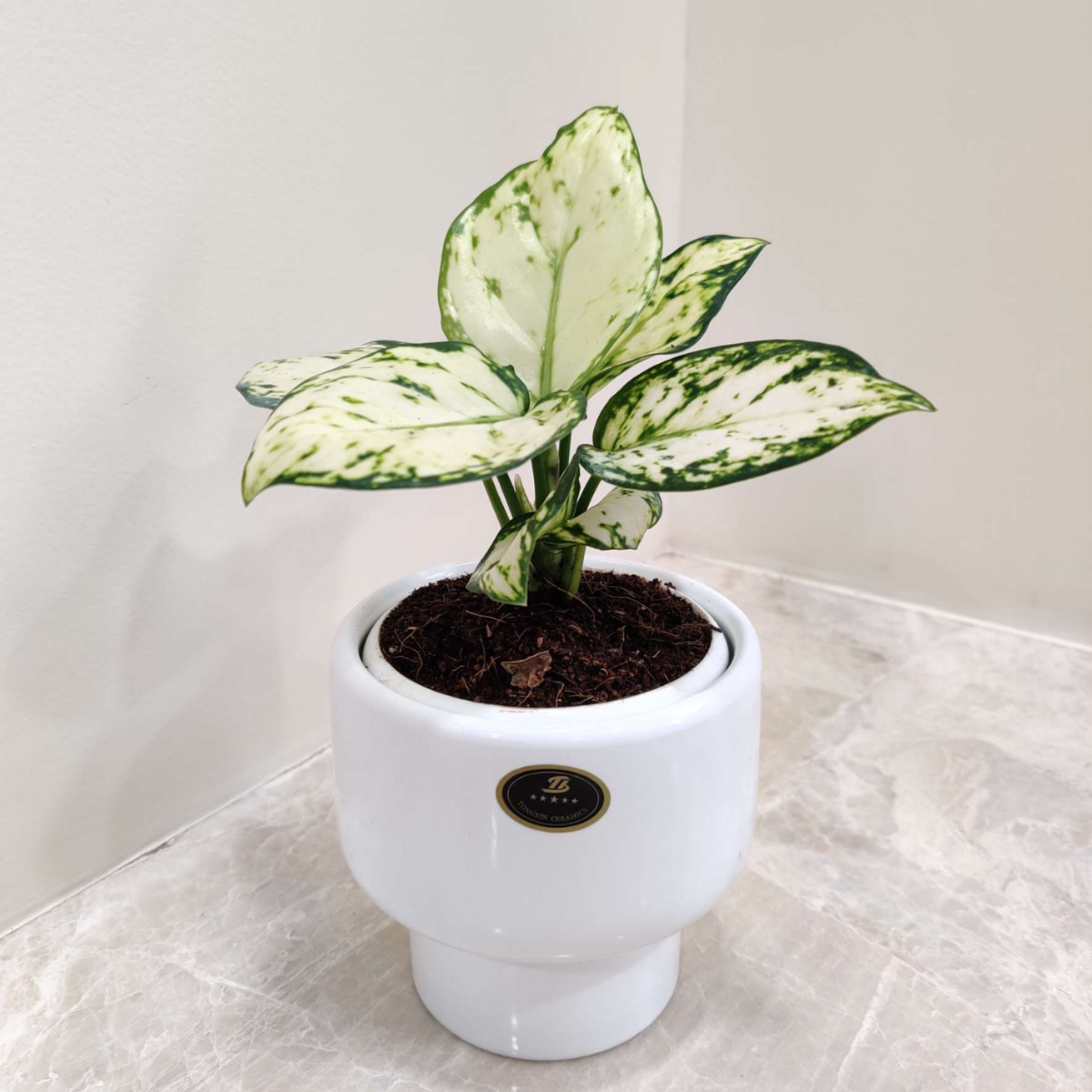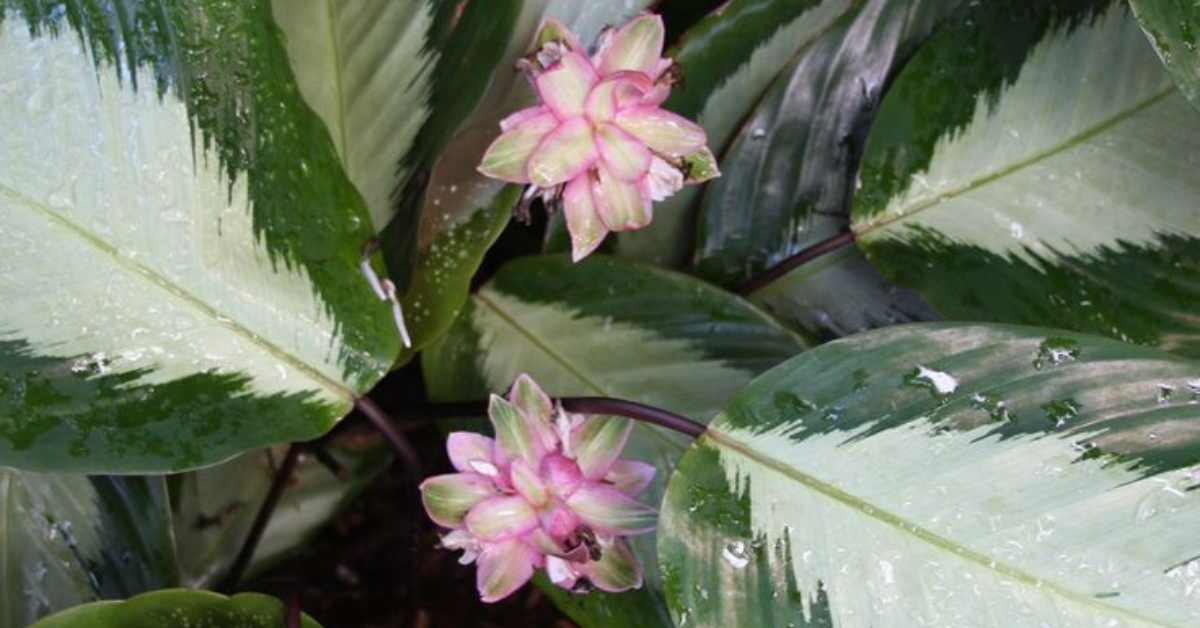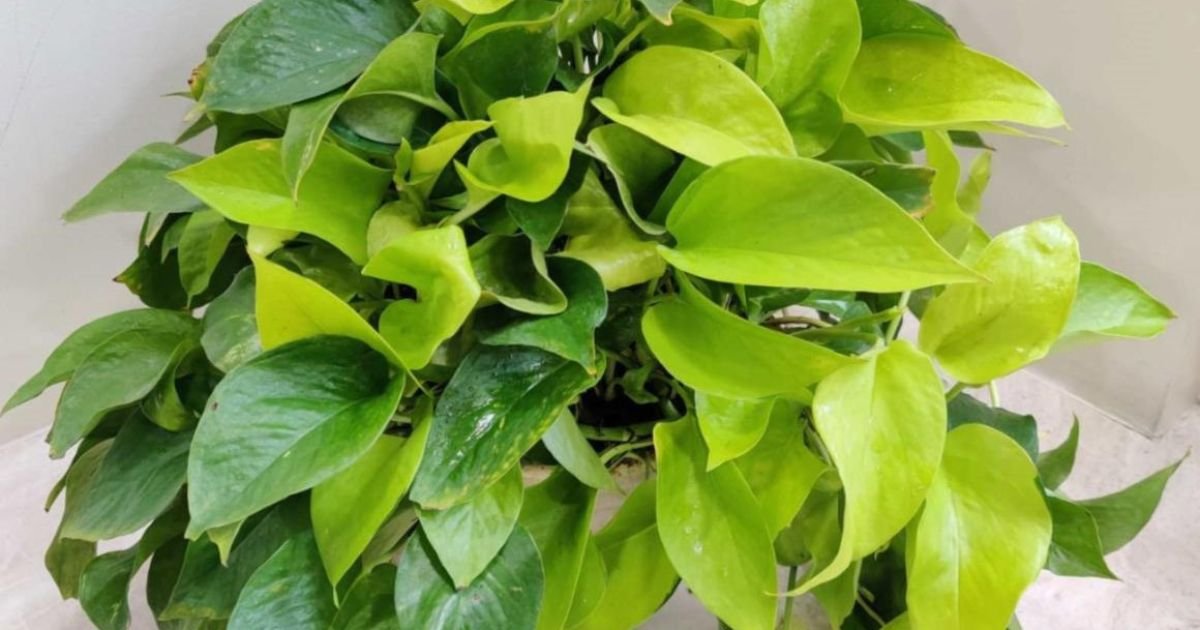Snake plants (Sansevieria), also called Mother-in-Law’s Tongue or Dracaena trifasciata, are among the most popular indoor plants for homes and offices. Loved for their striking upright leaves, low-maintenance nature, and powerful air-purifying qualities, these hardy succulents thrive in a wide range of conditions—making them perfect for both beginners and seasoned plant enthusiasts.
NASA’s Clean Air Study even recognized snake plants as one of the best air-purifying plants, capable of filtering toxins like formaldehyde, benzene, and xylene, while also releasing oxygen at night. This makes them not only a stylish décor choice but also a health-boosting addition to any space.
Whether you’re looking for a minimalist plant for your office desk, a bold statement plant for your living room, or a durable houseplant that thrives on neglect, snake plants (Sansevieria varieties) are an excellent choice. In this guide, we’ll explore the best snake plant varieties, their unique features, and easy care instructions to help you grow them successfully indoors.
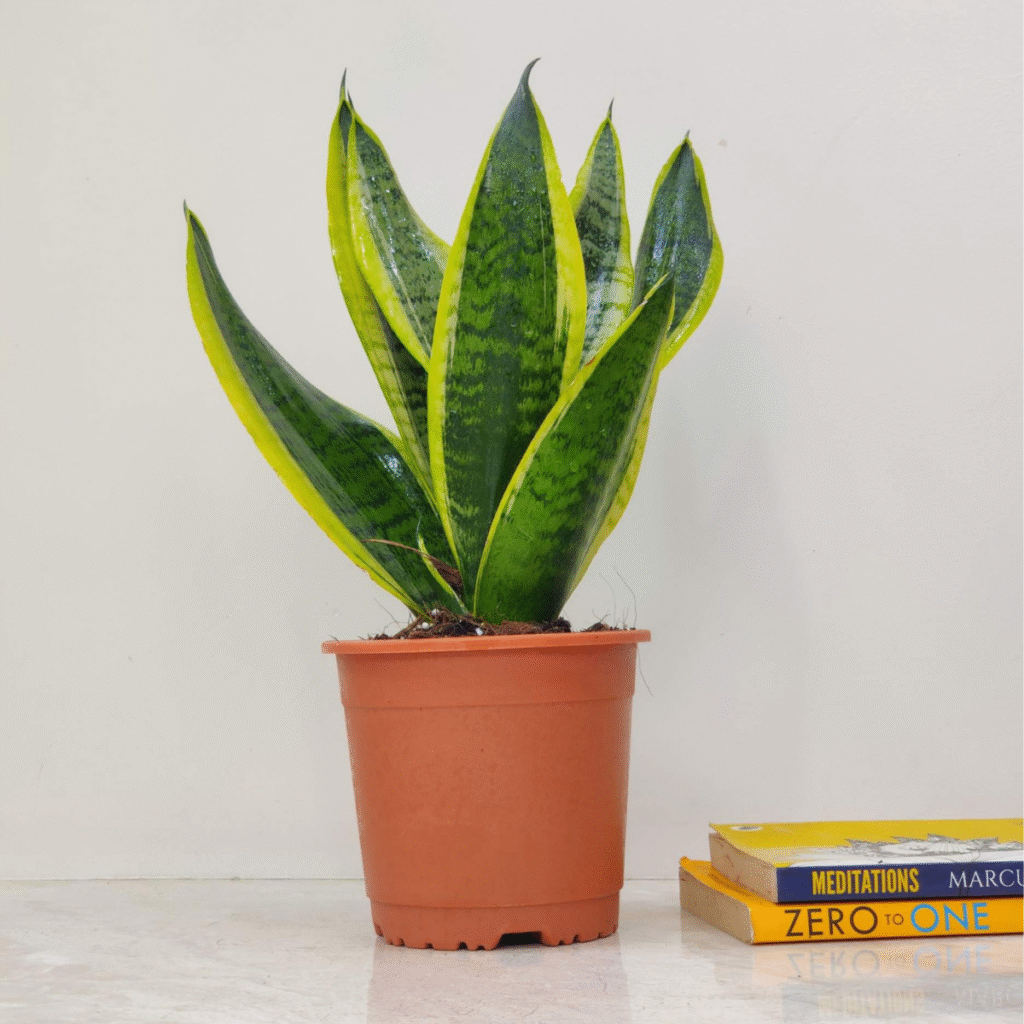
Why Snake Plants Are Popular
Before diving into the varieties, let’s understand why snake plants are so popular among plant lovers:
- Low Maintenance: Snake plants can survive irregular watering, low light, and even periods of neglect.
- Air-Purification: According to NASA’s Clean Air Study, snake plants are effective at removing toxins like formaldehyde, benzene, toluene, and xylene.
- Versatile Décor Plant: Their bold, upright leaves complement modern, minimalist, and classic interiors alike.
- Resilience: Snake plants tolerate drought, low humidity, and a wide range of temperatures.
Beyond their beauty and air-purifying abilities, snake plants also hold deep spiritual significance in many cultures. If you’d like to learn how planting snake plants at home can bring peace and prosperity, check out our Spiritual Guide to Snake Plants.
Types of Snake Plants with Features & Care Tips
1. Sansevieria Tornado
- Description: Compact and eye-catching, the Tornado features spiraled leaves with dark green centers and yellow edges.
- Features: The twisted, spiral growth pattern makes it ideal for tabletops and small spaces.
- Care:
- Light: Bright indirect light preferred, but tolerates low light.
- Water: Every 12–20 days, ensuring soil dries completely.
- Extra Tip: Perfect for beginners—highly drought tolerant.
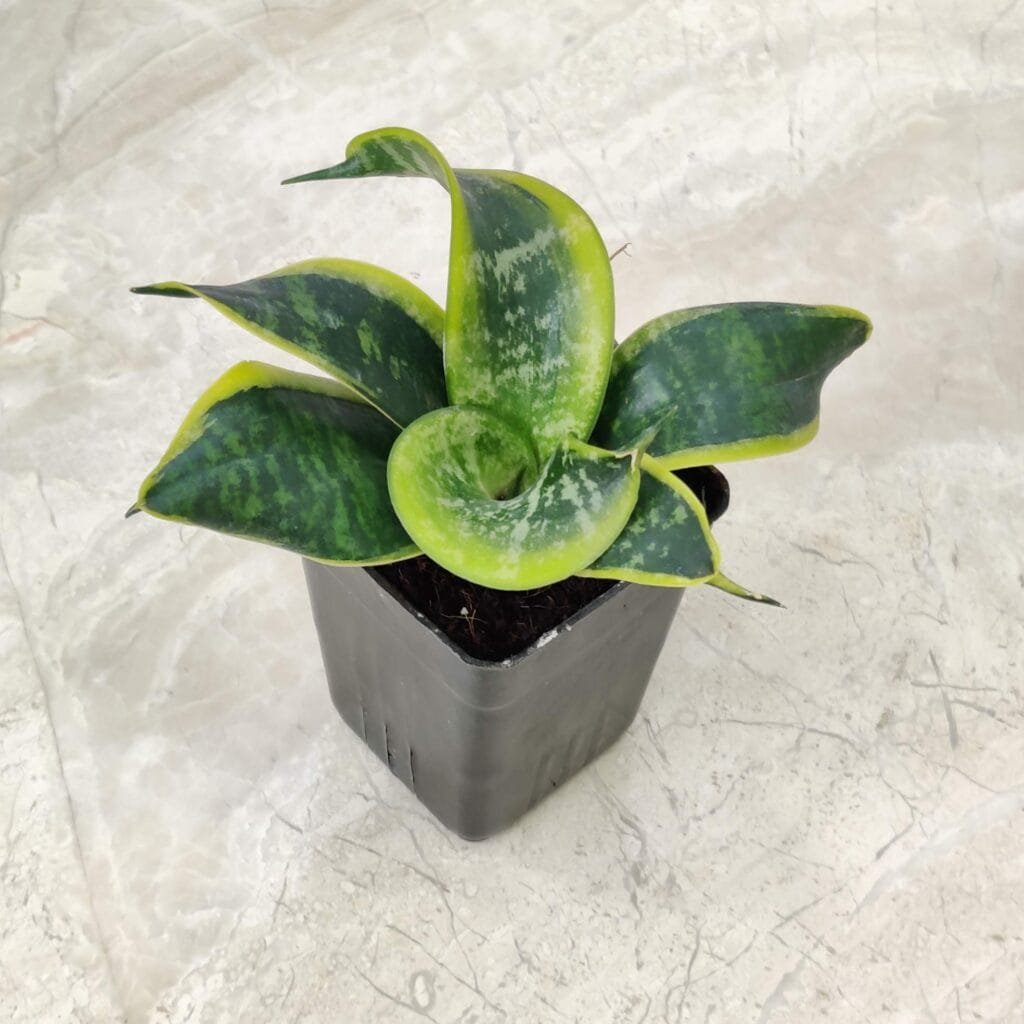
2. Sansevieria Trifasciata Whitney
- Description: A compact snake plant with dark green leaves bordered by silver-green edges.
- Features: Short, sword-shaped leaves form attractive rosettes.
- Care:
- Light: Low to medium indirect light.
- Water: Minimal; let soil dry out.
- Placement: Works best as a desktop or shelf plant.
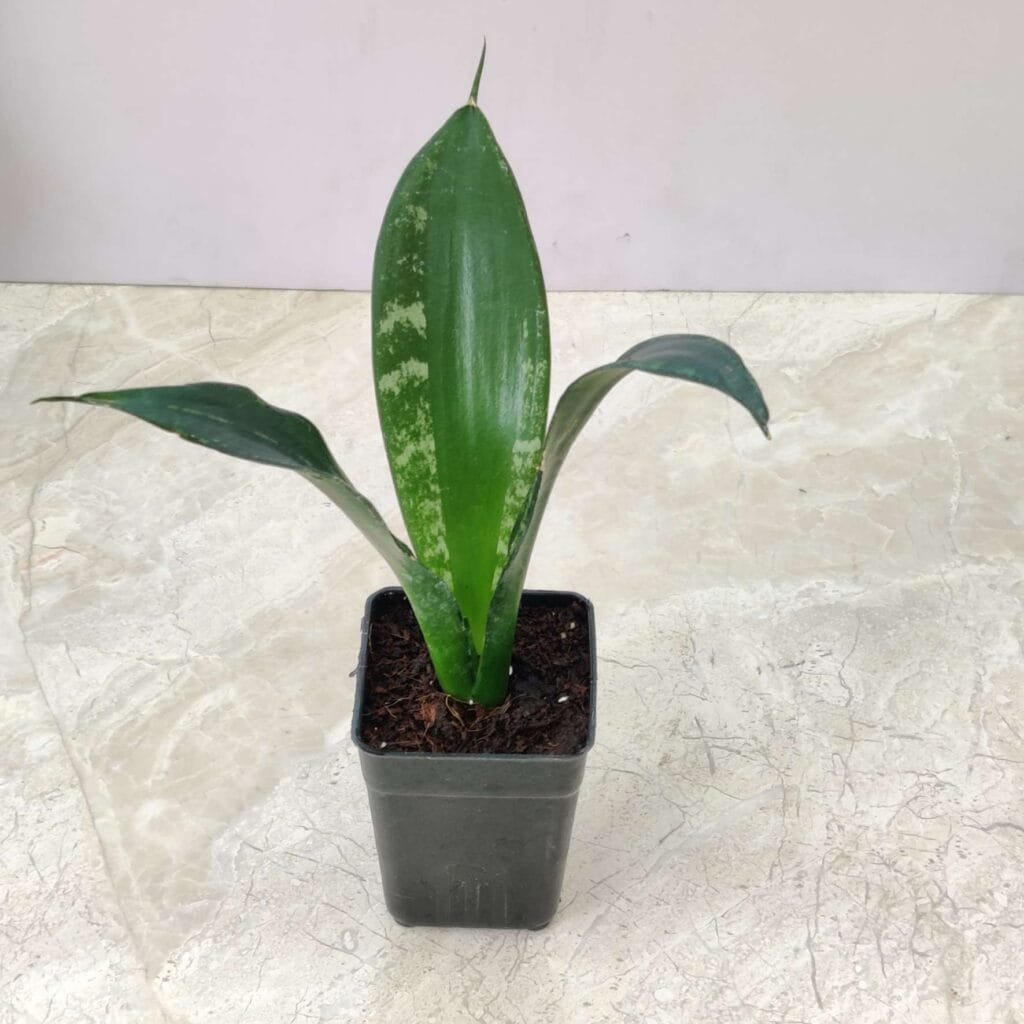
3. Sansevieria Swirl
- Description: Distinct for its spiral-like swirling leaves patterned with light and dark green tones.
- Features: Artistic and sculptural—adds modern appeal.
- Care:
- Light: Prefers medium to bright indirect light.
- Water: Only when soil is dry.
- Styling Tip: Great as a decor accent in minimalist homes.
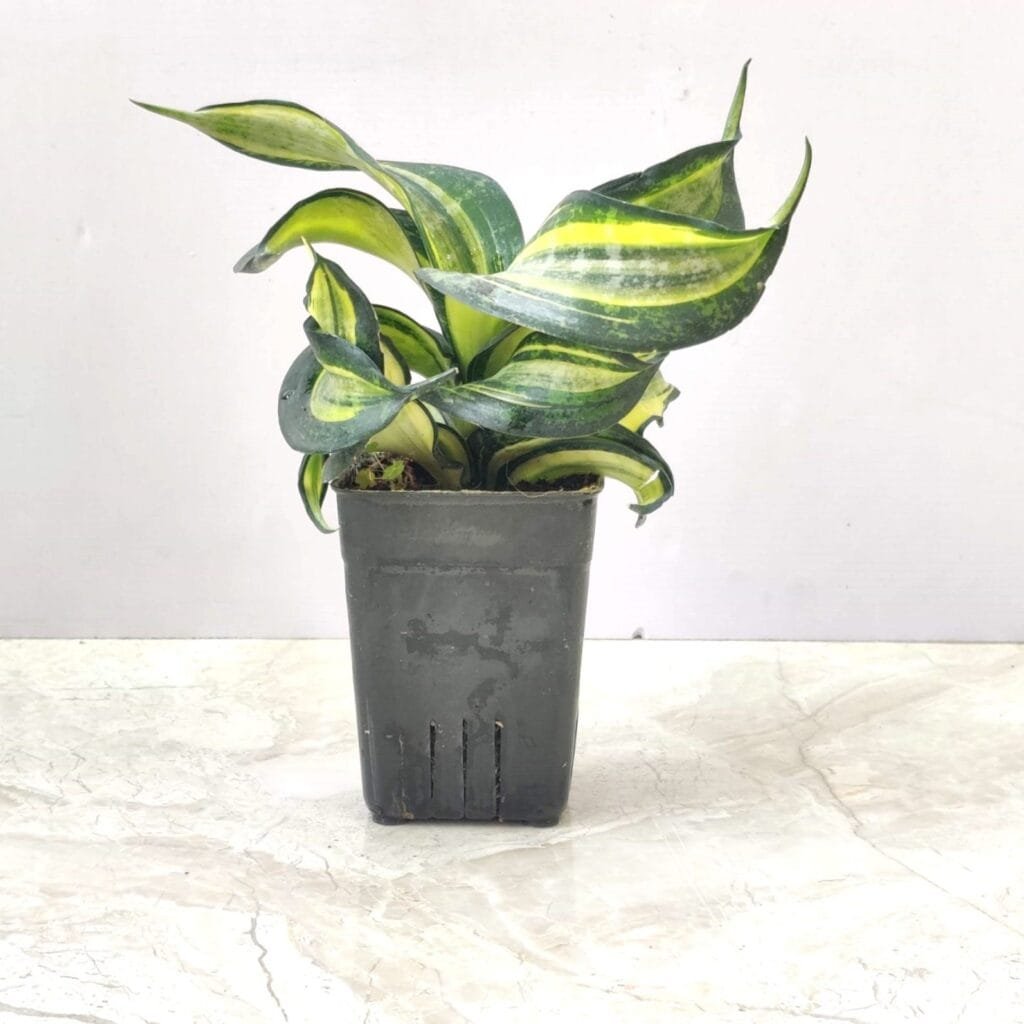
4. Sansevieria Black Gold
- Description: Dramatic foliage with dark green-black centers and golden-yellow edges.
- Features: Upright growth with striking contrast.
- Care:
- Light: Bright, indirect light enhances yellow borders; tolerates low light.
- Water: Allow soil to dry fully.
- Styling: Best suited for floor planters or corners.
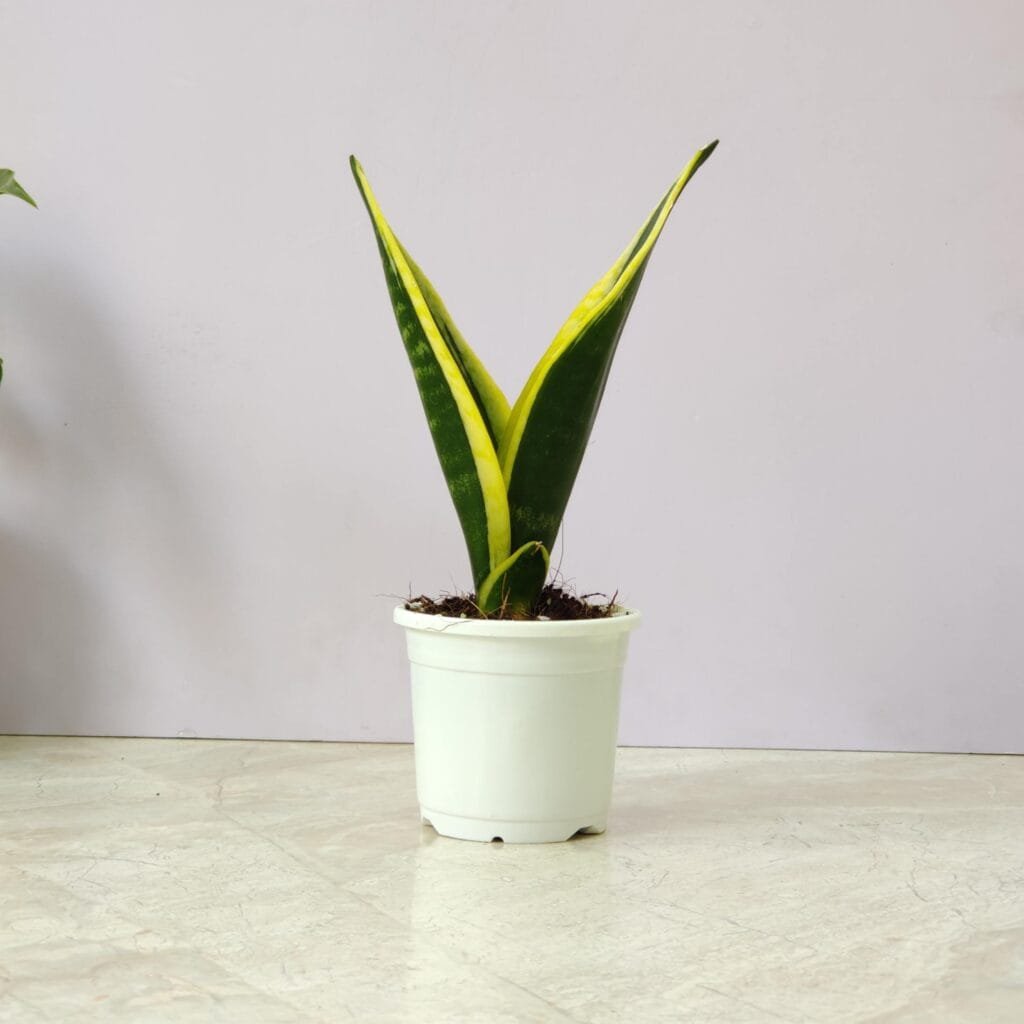
5. Sansevieria Boncel (Sansevieria Cylindrica ‘Boncel’)
- Description: Rare and exotic, Boncel has fan-shaped cylindrical leaves in a star-like spread.
- Features: Tubular, thick leaves give it a modern architectural look.
- Care:
- Light: Bright, indirect sunlight preferred.
- Water: Infrequent watering with well-drained soil.
- Appeal: Perfect as a statement piece.
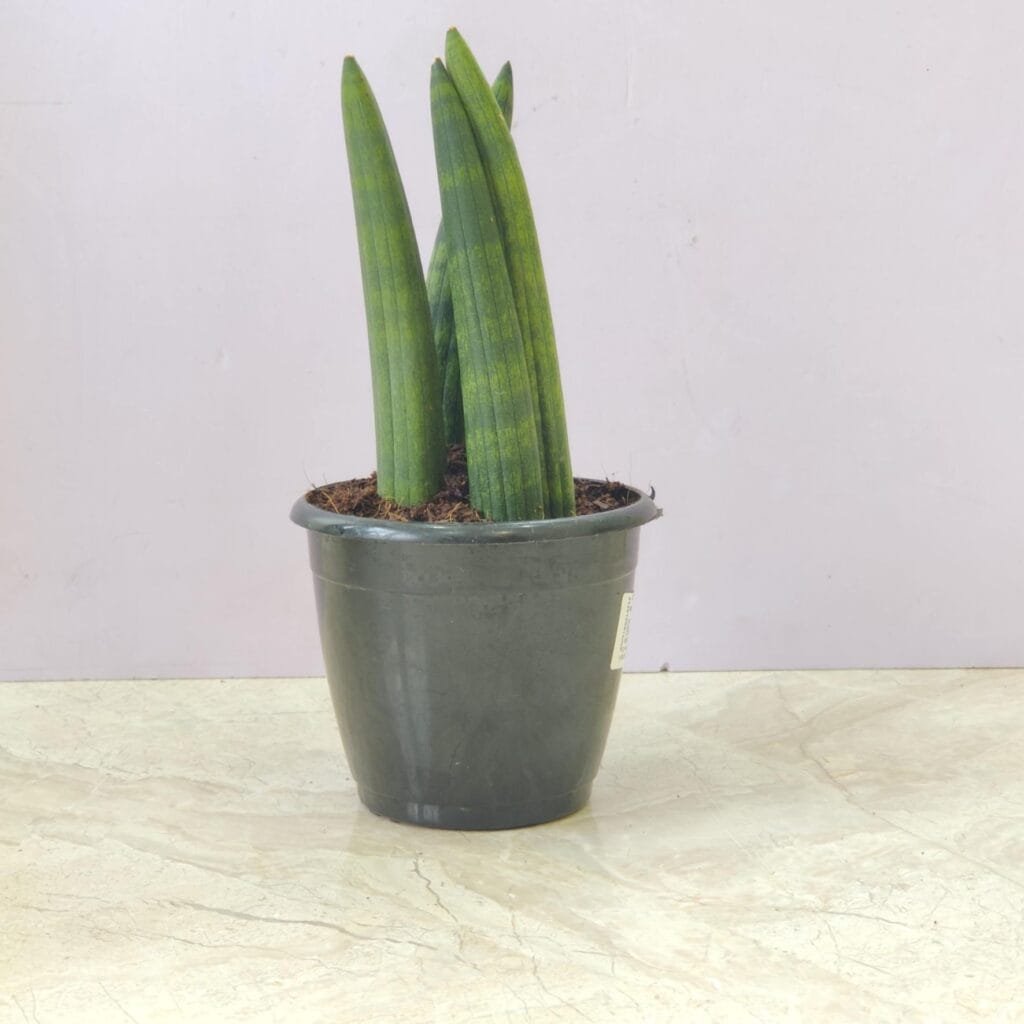
6. Sansevieria Crooked
- Description: Known for its wavy, contorted leaves, giving it a playful appearance.
- Features: Unique “crooked” growth makes it stand out.
- Care:
- Light: Adaptable to most conditions.
- Water: Sparingly, when soil is dry.
- Bonus: Great for beginners seeking something quirky.
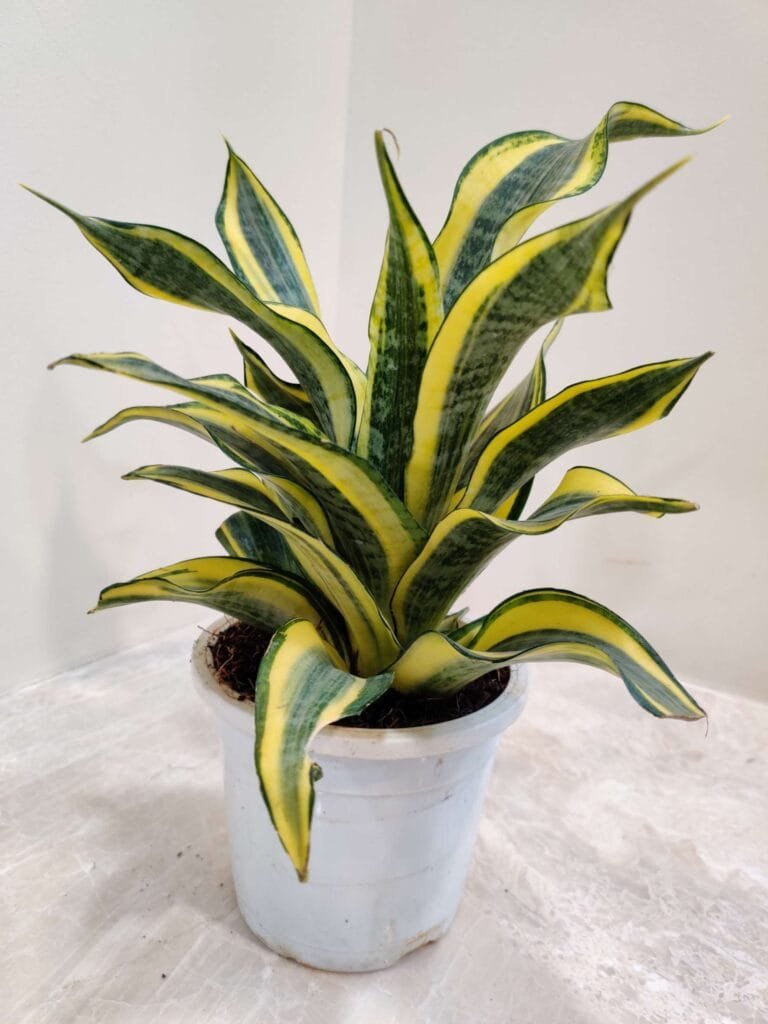
7. Sansevieria Superba
- Description: A robust variety with broad, upright leaves edged in yellow.
- Features: Similar to Laurentii but more compact and denser.
- Care:
- Light: Low or bright light.
- Water: Allow soil to dry fully.
- Placement: Works well as a corner accent plant.
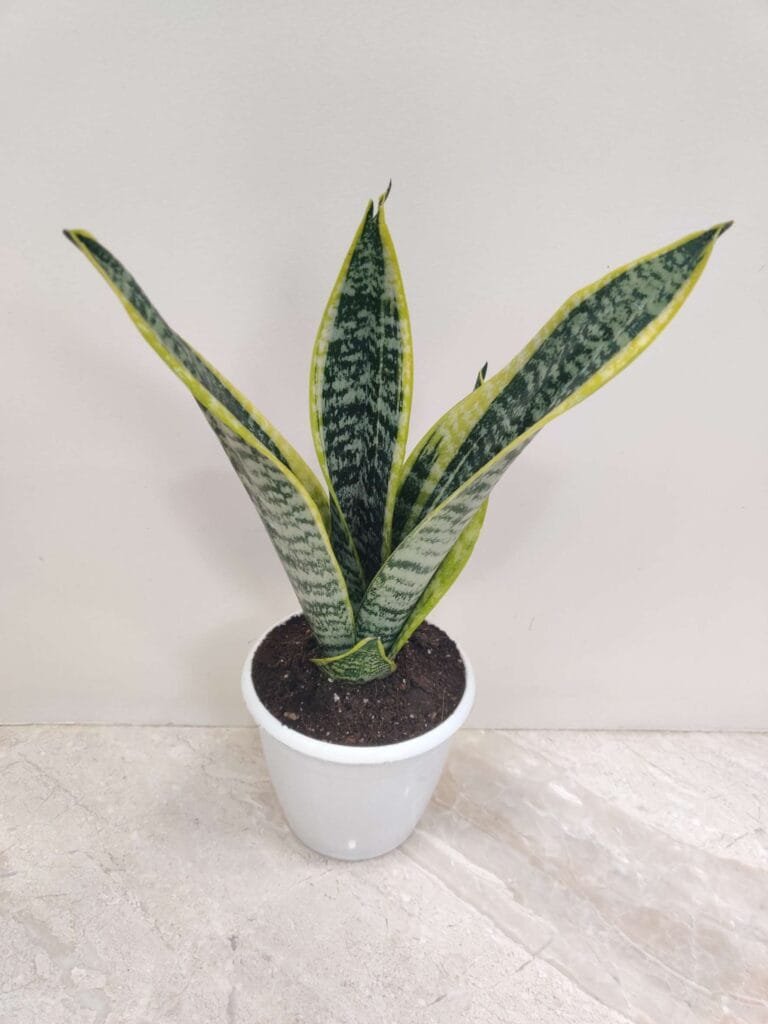
8. Sansevieria Laurentii
- Description: The classic snake plant with tall sword-shaped leaves edged in yellow.
- Features: Most recognizable variety; often called the “standard” snake plant.
- Care:
- Light: Extremely adaptable; tolerates both low and bright light.
- Water: Water sparingly. Avoid overwatering.
- Highlight: Featured in NASA’s air-purifying plant list.
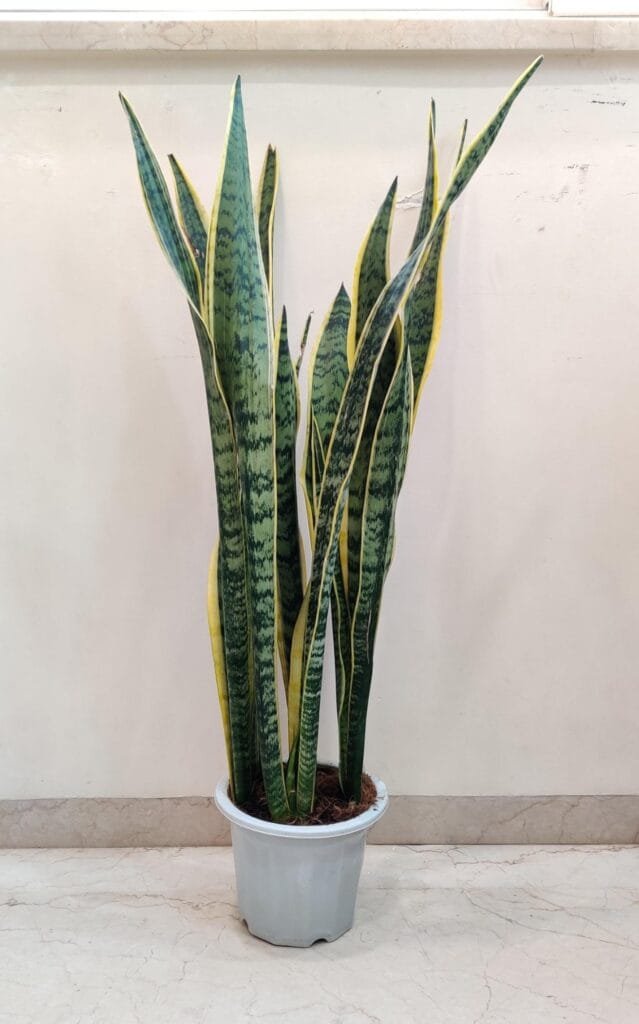
9. Sansevieria Green
- Description: Minimalist with solid green, unvariegated leaves.
- Features: Simplicity and elegance make it a perfect choice for modern interiors.
- Care:
- Light: Can grow in both low and bright light.
- Water: Needs little water; allow soil to dry.
- Styling: Complements neutral décor themes.
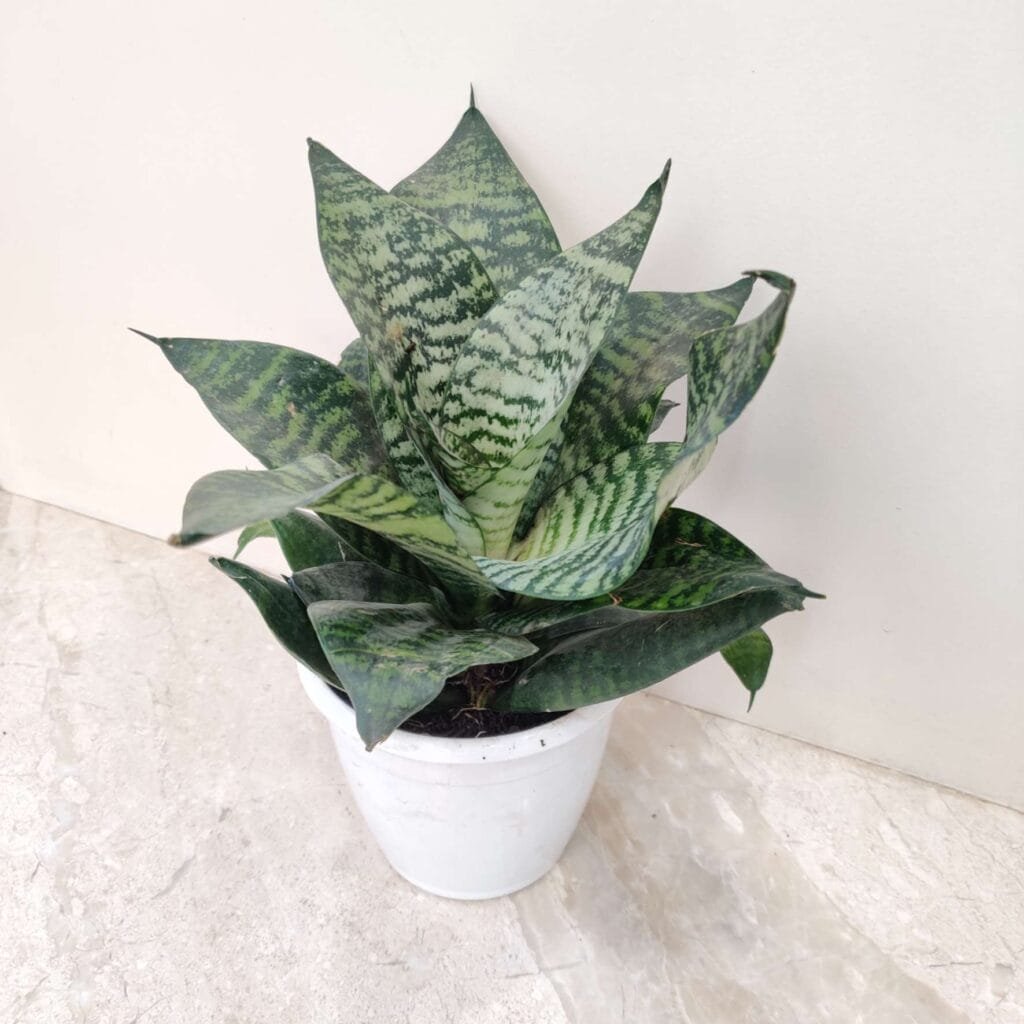
General Snake Plant Care Tips
Regardless of variety, here are some universal care tips:
- Soil: Always use well-draining soil to avoid root rot.
- Watering: Less is more—overwatering is the main reason snake plants die.
- Potting: Keep them pot-bound for best growth.
- Air Quality: Snake plants filter indoor air, removing harmful toxins.
- Safety: Mildly toxic if ingested by pets or children—place with caution.
Creative Ways to Style Snake Plants in Your Home
Snake plants are not only easy-to-care-for houseplants but also incredibly versatile décor elements. Their upright, architectural leaves make them ideal for enhancing almost any space—from modern minimalist interiors to cozy bohemian corners. Here are some creative ways you can style different snake plant varieties around your home:
1. Corners & Vertical Spaces
Tall varieties like Sansevieria Laurentii or Sansevieria Black Gold are perfect for filling awkward empty corners. Their bold, upright leaves draw the eye upward, creating the illusion of higher ceilings and adding structure to a room. Placing them in sleek ceramic or metallic floor planters can instantly transform a dull corner into a stunning focal point.
Pro Tip: Use snake plants in living rooms near sofas, sideboards, or mirrors to balance empty spaces and add a touch of greenery.
2. Tabletops & Shelves
Compact snake plant varieties such as Tornado, Whitney, or Crooked are great for small surfaces like desks, coffee tables, bookshelves, or windowsills. Their upright leaves add texture without overwhelming the space.
Styling Idea: Group a few compact Sansevieria varieties in matching minimalist ceramic pots for a clean, modern look, or mix different pot styles for a playful, eclectic vibe.
3. Entryways & Hallways
Want to make a strong first impression? Place a single dramatic snake plant in a tall pot near the entrance or line up a trio of mixed varieties for a layered effect. Not only do they look elegant, but they also naturally purify the air, making your entryway fresher and more welcoming.
Feng Shui Tip: Position a snake plant near the entrance to ward off negative energy and invite positive vibes into your home.
4. Bathrooms
Surprisingly, snake plants do very well in humid spaces like bathrooms. Compact plants can be placed on countertops, while taller ones can sit beside bathtubs or on stools to create a spa-like atmosphere. Their sleek foliage thrives in humidity and low light, making them perfect for bathrooms with limited natural sunlight.
Decor Tip: Pair your snake plant with candles, natural stones, or bamboo décor for a complete spa-inspired look.
5. Bedrooms
Snake plants are unique because they release oxygen at night, unlike most plants that only do so during the day. This makes them one of the best bedroom plants for improving air quality and promoting restful sleep. Place a medium-sized Laurentii or Superba on the nightstand, dresser, or in a corner of your room.
Wellness Tip: Keeping a snake plant in your bedroom may help reduce stress, improve sleep quality, and add a calming green element to your space.
Pair your snake plant with stylish ceramic pots and planters to elevate your décor.
Styling Tips for Snake Plants
- Pot Selection: Choose pots that match your interior style. Go for sleek white ceramic pots for a modern aesthetic, woven baskets for a boho vibe, or metallic containers for an industrial look.
- Mix & Match: Don’t be afraid to group snake plants with other indoor plants like peace lilies, ferns, or succulents. This creates visual depth and a vibrant green ensemble.
- Feng Shui & Vastu: Place snake plants in the southeast corner of your living room to attract prosperity, in the bedroom for relaxation, or near entrances for protective energy.
- Natural Dividers: Use snake plants of varying heights as living room dividers in open spaces, studios, or offices. Their upright leaves naturally section off spaces without closing them in.
Unique Styling Ideas
- Glass Bowls & Stones: Plant compact snake varieties in glass bowls with white stones or pebbles for a chic tabletop display.
- Grouped Displays: Create a cluster of different Sansevieria varieties in assorted pots for an artistic, gallery-like look.
- Statement Plant: A single floor-to-ceiling snake plant in a tall planter can serve as a dramatic vertical statement piece in large rooms.
- Backlit Beauty: Place tall snake plants near windows or install subtle lighting behind them—their upright leaves cast stunning shadows that add mood to the space.
With their timeless elegance and adaptability, snake plants can seamlessly fit into any corner of your home. Whether you’re decorating a minimalist office desk, a cozy bedroom corner, or a grand living room, these versatile plants bring not just beauty, but also fresh air and positive energy to your space.
While styling snake plants around your home, keep in mind that improper watering or low light can sometimes cause leaves to droop. If this happens, our guide Why Your Snake Plant Is Drooping—and How to Fix It Like a Pro will help you bring them back to health.
Final Thoughts
Snake plants are more than just houseplants—they are stylish, functional, and resilient green companions. Whether you admire the spiraling beauty of Tornado, the classic elegance of Laurentii, or the modern statement of Boncel, there’s a variety that fits every space and personality. Love these varieties and want to grow more from a single plant? Learn easy methods in our step-by-step guide on How to Propagate Snake Plants at Home
By choosing snake plants, you’re not only adding beauty and structure to your home but also investing in cleaner air, low-maintenance greenery, and timeless style.
Bring home one—or several—of these stunning types of snake plants and transform your living space into a lush, healthy sanctuary.
FAQs
1. Which snake plant grows the fastest?
The Sansevieria Laurentii and Superba varieties are among the fastest-growing snake plants under the right conditions.
2. Are snake plants safe for pets?
Snake plants are mildly toxic if ingested by cats or dogs. Keep them out of reach of pets and small children.
3. Which snake plant is best for beginners?
The Sansevieria Tornado, Crooked, and Laurentii are highly resilient, making them perfect starter plants.
4. Can snake plants grow in low light?
Yes, snake plants thrive in low light, but they grow faster and show brighter colors in medium to bright indirect light.
5. How often should I water my snake plant?
Generally, every 2–3 weeks. Always check the soil and water only when it is completely dry.
6. Can snake plants survive in bathrooms?
Yes! Snake plants tolerate humidity well and look stunning in bathroom settings.
7. Do snake plants really clean the air?
Yes, snake plants are proven to remove toxins like formaldehyde, benzene, and xylene from the air, improving indoor air quality.


